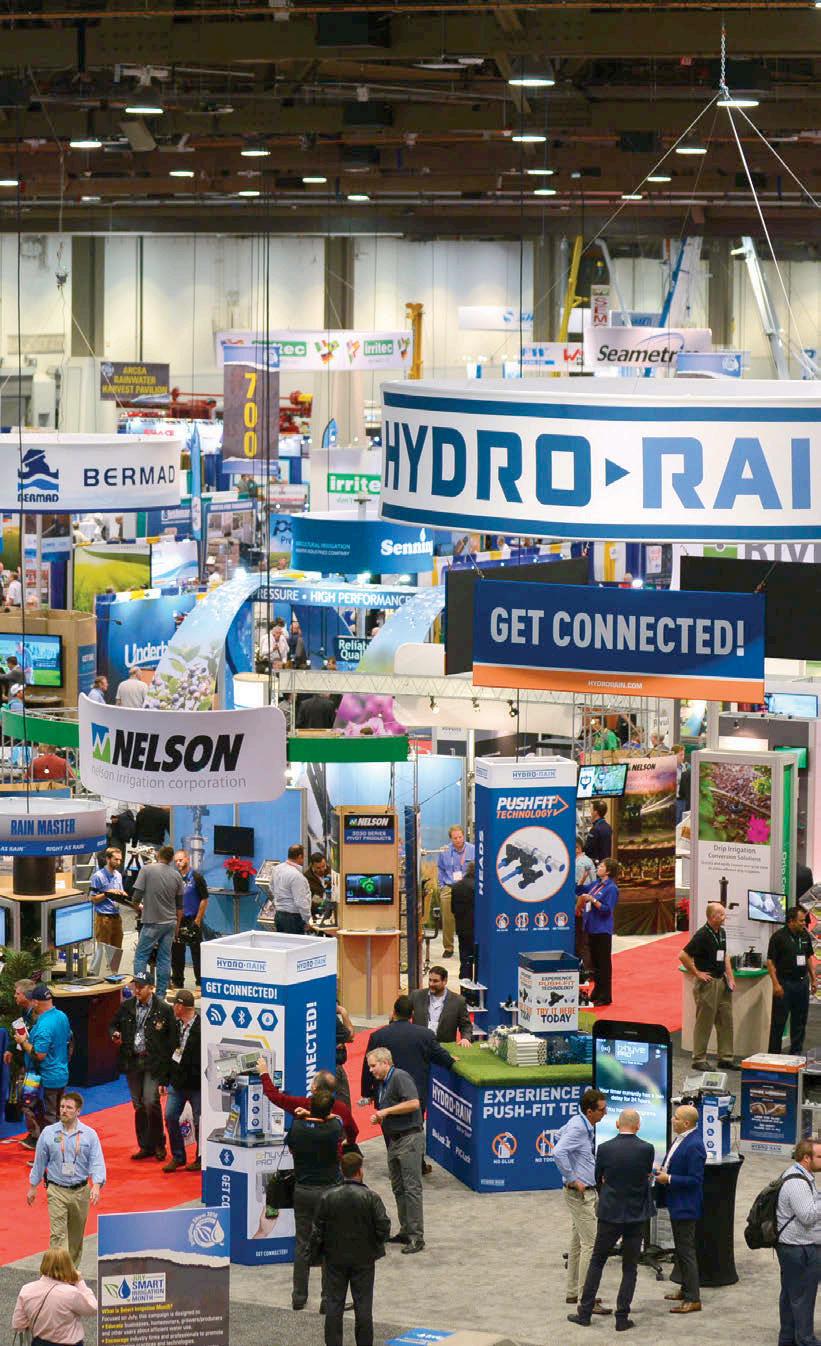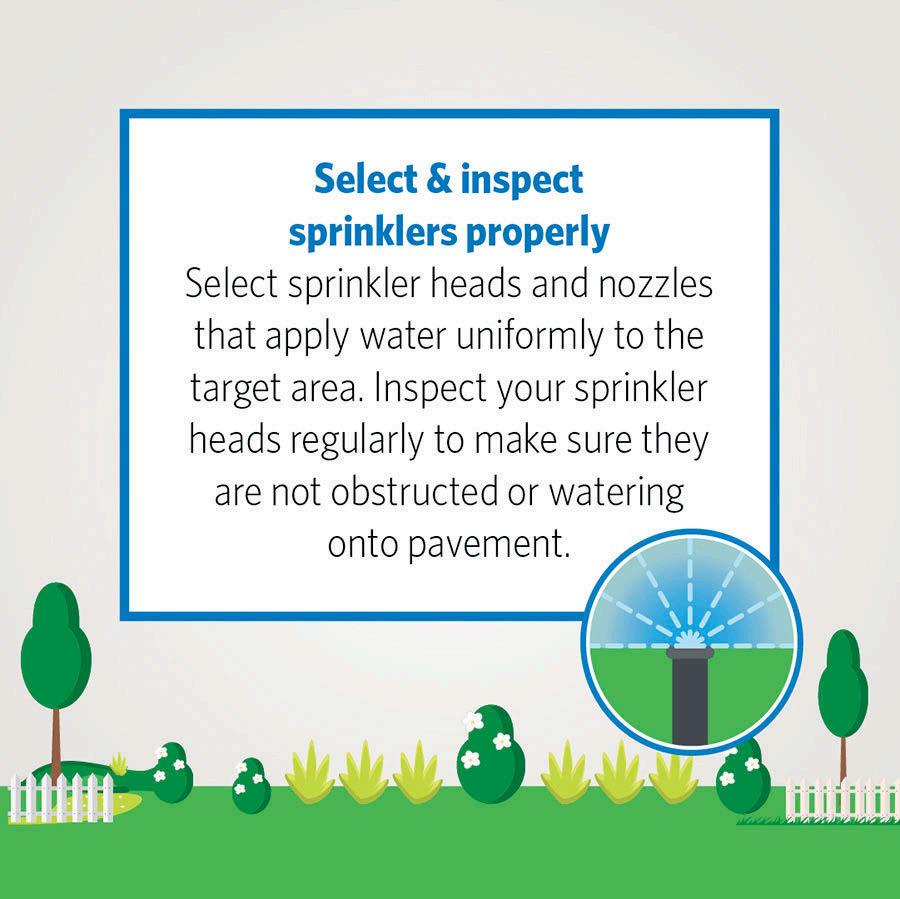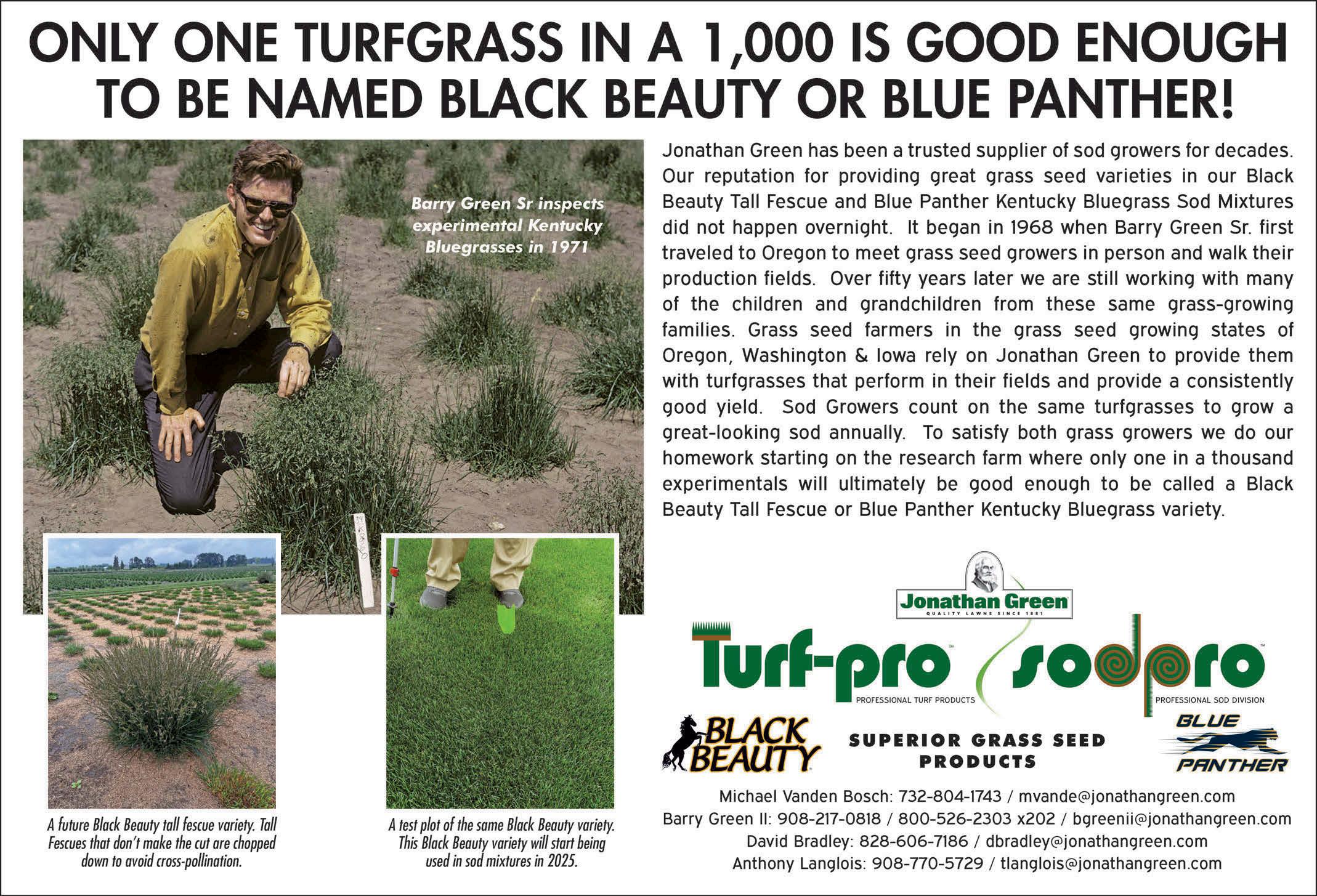
4 minute read
Help Your Customers Conserve Water
Expand your ag irrigation knowledge.
Explore unique solutions and new products.
Attend the largest trade show dedicated to irrigation for access to • hundreds of exhibitors, including ag irrigation tech startups. • the latest innovations in ag irrigation during the new product contest. • industry experts who can answer your most pressing questions. • exciting events like the Viva Las Vegas Reception and a Craft Brewfest.
Use promo code TN22 for a FREE registration to the show!
Register now at irrigationshow.org to experience everything the 2022 Irrigation Show and Education Week has to offer!
December 5-9, 2022 | Trade Show | Dec. 7-8
Las Vegas Convention Center | Las Vegas, Nevada NGWA SM
The Groundwater
Association
HELP YOUR CUSTOMERS CONSERVE WATER
Though the Irrigation Association’s (IA) official “Smart Irrigation Month” promotion ended in July, the need for smart irrigation never comes to an end. IA encourages its members—and all of the green industry—to “continue promoting smart irrigation and your company’s sustainable solutions all year long with your customers, regulators, legislators, and water districts.” With heat and drought conditions impacting much of the world, it’s essential to keep sharing the message about the importance of water-use efficiency and conservation. For turfgrass producers, that outreach can—and should— extend to all the entities the IA lists above.
Who Needs to Hear What?
No matter your location on the globe, your company will interact with governmental agencies that are local, regional, national, and in some instances, international. Many of these have the authority to make water-use decisions that could potentially impact how you operate your business. With so much negative information about turfgrass wateruse flowing from multiple sources, you need to ensure those agencies recognize you and your company as wise stewards of this valuable resource. The first steps in this process are identifying those that are in a position of authority on water-use issues, establishing communication with those people, and listening to their questions and concerns. The information you gather in these first steps will guide your outreach efforts. Your outreach might be to individuals, committees, councils, departments, legislative branches, or most or all of these entities. Your message to these agencies might, in some instances, need to focus on the basic scientific facts about what turfgrasses are, how they are managed efficiently and effectively to minimize water use, and how they contribute to the environment and to their constituents’ quality of life. In other cases, your message may require ramping up the technical level to demonstrate how you are basing your own water-use on precisely monitored plant, soil, and microclimate conditions.
Your customers may be an equally broad category, depending on how your business operates. Are you selling your grasses to sports facilities, golf courses, parks and recreation facilities, municipalities, facility designers and developers, landscape architects, landscape contractors, directly to homeowners, or to two or more of those categories? Do you produce some or all of your grasses on contract following your customer’s specifications? Do your
customers pick up the harvested product from your company? Do you deliver it to them with company equipment and personnel? Do you use contracted delivery services? Does your company handle off-site installations? Do you use contracted installers? Most of you will serve more than one of these customer categories. Some of you have such diversified business that you could answer yes to all of these questions. The technical level of your outreach will vary with each of these customer categories, and probably across a broad spectrum within these categories. As with the governmental agencies, your first steps are connecting with your customers to determine who the decision makers are, whether it’s an individual, or several individuals with differing levels of authority within an organization. Again, the key is establishing communication with those people, and listening to their questions and concerns. You may find that you also need to establish connections with your customers’ customers to more effectively understand the questions and concerns they are raising for your customers. In some instances, you may need to target your outreach to an entire department, facility, company, homeowners’ association (HOA), neighborhood, subdivision, or city.
How Do You Deliver Your Messages?
To amplify the impact of your outreach, share your messages on multiple platforms. Post signage in your office and on your trucks. Set up a section on your website. Spread the word on social media: Facebook, Twitter, Instagram, YouTube, and LinkedIn. Prepare a water-use efficiency and conservation presentation to deliver as the featured speaker for the meetings of area associations. Offer to be an information source for the media—radio, television, newspapers. Resources to develop your outreach are available through TPI, The Lawn Institute (TLI), and IA (see the example of IA graphics in this article). And through such associations as Turf Australia and, for those in the UK and Ireland, the Turfgrass Growers Association (TGA).

Suz Trusty is co-editor of Turf News.











